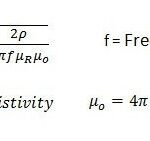What is PUSCH in LTE?
Today, we are going to explore PUSCH in LTE. If you’ve read about the concept of uplink communication in previous articles, you might already have a basic understanding of how the data travels from the User Equipment (UE) to the base station. Now, I’ll break down what PUSCH (Physical Uplink Shared Channel) is and how it fits into LTE’s overall communication system.
Understanding PUSCH in LTE
PUSCH is a critical component of the LTE uplink system. It refers to the shared channel used by the UE to send data back to the eNodeB (evolved NodeB). Unlike dedicated channels, PUSCH is shared among different UEs within the same cell. This means that multiple devices may use PUSCH simultaneously, which requires efficient management to ensure that the transmission from all devices doesn’t interfere with each other.
In simple terms, the UE uses the PUSCH to transmit various types of data to the network, including user data, control information, and even retransmissions of data that was not successfully received. The PUSCH operates on physical resources allocated by the eNodeB, and the allocation is done dynamically based on the needs of the UE at that time.
Role of PUSCH in LTE Communication
The PUSCH plays a vital role in the bidirectional communication in LTE. As we discussed in the context of DL (downlink), the uplink is equally important. The PUSCH helps the UE transmit information like voice, video, or other data types to the network. This information could include applications like VoIP, online browsing, and more. So, let’s go deeper into how PUSCH fits into the LTE architecture:
- Dynamic Allocation: One key feature of PUSCH is its dynamic allocation. The eNodeB allocates resources to the UE based on real-time conditions, such as channel quality, interference, and the UE’s transmission needs.
- Shared Transmission: Since PUSCH is a shared channel, it needs proper scheduling and power control to avoid interference from other UEs using the same channel. This is where the resource block allocation and scheduling in LTE come into play.
- Control Information: Along with user data, PUSCH can carry control information like Hybrid Automatic Repeat Request (HARQ) feedback and CQI (Channel Quality Indicator). These signals help manage the connection and ensure that the data is correctly transmitted to the eNodeB.
How Does PUSCH Work in LTE?
Let’s break down the working of PUSCH step by step. When a UE needs to send data to the eNodeB, it first waits for a scheduling request from the eNodeB. This request tells the UE when and what resources it can use on PUSCH. Once the resources are allocated, the UE begins transmitting its data.
Here’s a simple workflow of how PUSCH operates:
- The eNodeB schedules a PUSCH transmission for the UE based on its current data and transmission requirements.
- The UE prepares the data, including any necessary control information (e.g., HARQ feedback), and then sends it over the allocated resources.
- Once the transmission is complete, the eNodeB decodes the data, checks for errors, and sends an acknowledgment or a retransmission request if necessary.
As we discussed earlier, efficient resource management is critical in a shared channel like PUSCH. To prevent collision and interference, LTE uses a variety of techniques like power control and scheduling algorithms. The eNodeB will adjust the UE’s transmit power to ensure that signals arrive with minimal interference and at the correct level for decoding.
Why PUSCH is Important in LTE
Without PUSCH, there would be no effective way for the UE to communicate back to the network. The uplink is just as crucial as the downlink, especially for services like VoIP and real-time data applications. So, the allocation of resources in PUSCH plays a huge role in maintaining stable communication and high-speed internet performance in LTE networks.
We’ve previously talked about the importance of scheduling and resource allocation in LTE, and PUSCH ties directly into these concepts. When you are using your phone for applications like video streaming or even browsing, a lot of the communication you are sending to the network is using the PUSCH. The efficiency of PUSCH affects your connection speed, stability, and the quality of service you experience.


